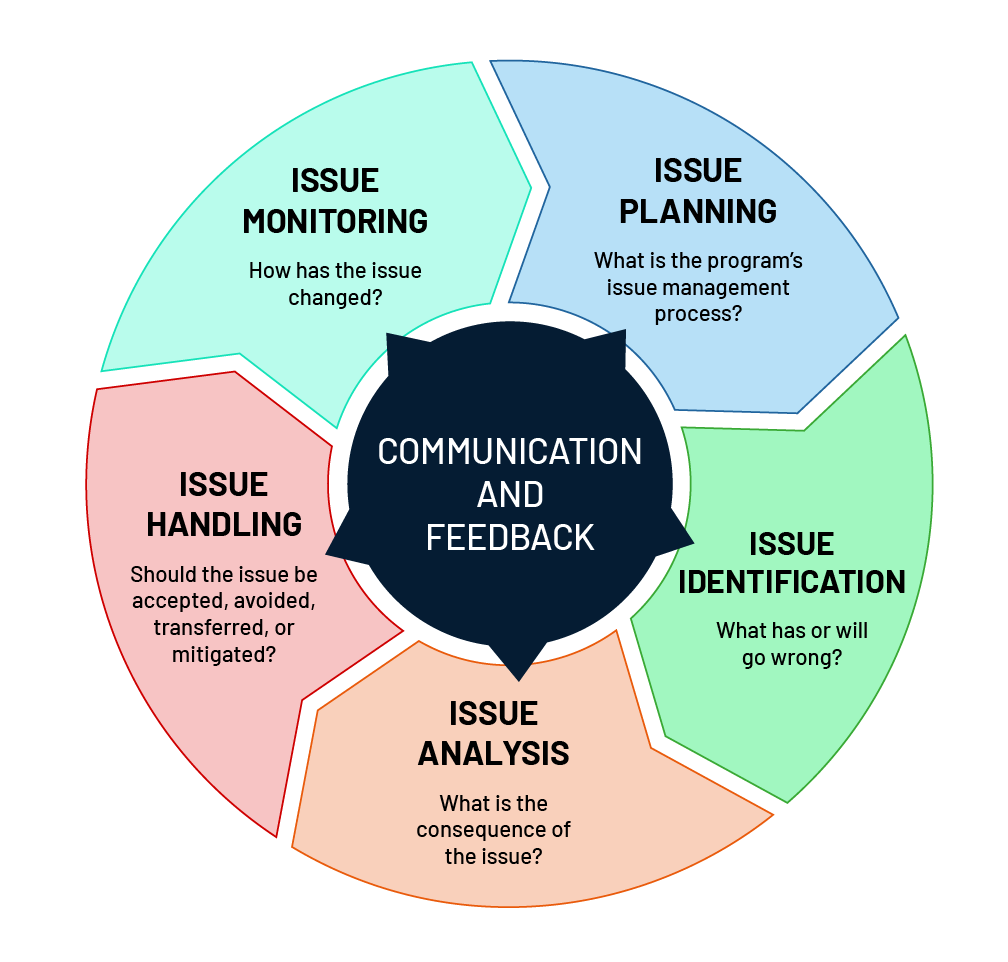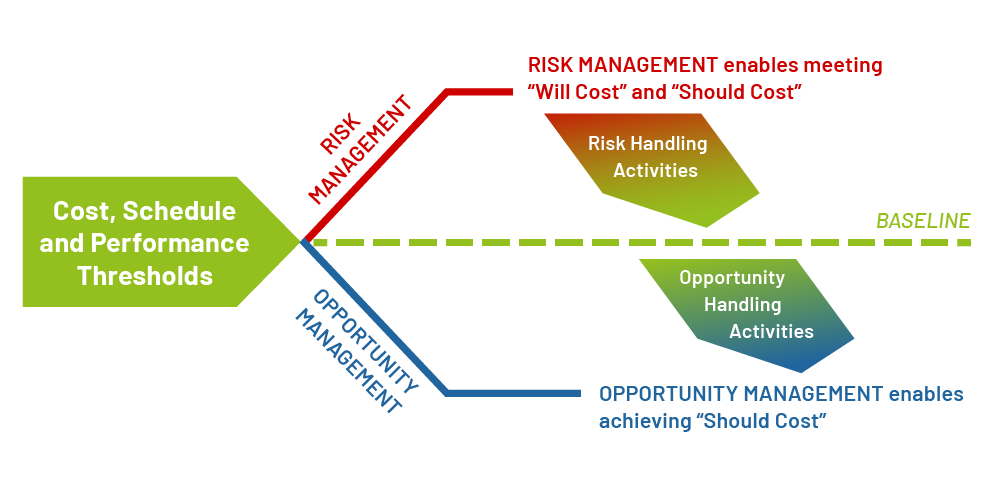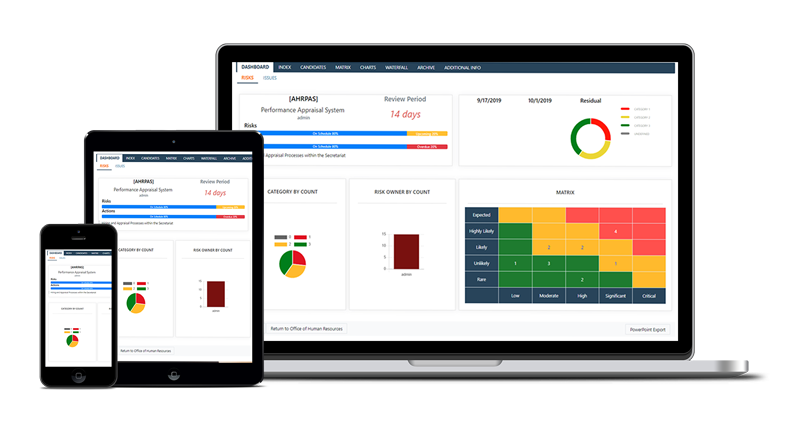Reduce Costs. Remove Uncertainty. Deliver Effectively
Issue & Opportunity Management
Issue Management
The IRIS Intelligence software range offers the ability to manage Risks, Issues and Opportunities side by side in a single seamless environment.
Issues are events that have occurred, are occurring, or are certain to occur that potentially have a negative effect on a project. It is not uncommon for risks to be misidentified as issues and vice versa.
A careful evaluation of the event and its likelihood is important in ensuring the effective management of the project. Issues not addressed appropriately may lead to additional unforeseen risks.
*Source: DoD Risk, Issue, and Opportunity Management Guide for Defense Acquisition Programs

Issue Management can be broken down into five main steps:
Step 1: Issue Identification
Issues can be events from the past, present or future. Past issues can be identified through a retrospective assessment of the project. For present and future issues, project members need to ask, “What problems have or will occur?”
Step 2: Issue Analysis
Once issues are identified, the possible consequences of the issues are then explored. A thorough analysis of the consequences will aid in assessing how critical an issue is.
Step 3: Issue Handling
Armed with all the relevant information, teams will then decide on how to handle the issue. Given how critical an issue is and its likely consequences, an issue can be avoided, accepted, transferred or mitigated.
Step 4: Issue Monitoring
The issue has now been handled according to the chosen approach. The issue is continuously monitored to see whether the initial assessments on the consequences and handling are correct. Relevant changes in assessment factors may require teams to return to the previous steps.
Step 5: Issue Management
Key personnel will be assigned to all identified issues. On the resolution of critical and high priority issues, issue management strategies are vetted at the program management level or higher, and resources are made available to ensure their correct execution.
The steps outlined above are indicative. Communication and feedback are necessary between steps to ascertain what the next line of action is best in resolving the issue.
Opportunity Management
IRIS Intelligence offers the ability to manage Risks, Issues and Opportunities side by side in a single seamless environment.
Opportunity management allows teams to plan, identify, analyze, handle, and monitor initiatives that present potential improvements in the current program (e.g. cost and schedule reductions).
The figure opposite is a simple portrayal of how side-by-side risk and opportunity management aids in achieving program benefits.

Opportunity Management can be broken down into five main steps:
Step 1: Opportunity Identification
Opportunities within the current project are identified. Teams can look at processes currently in place and identify what can be improved.
Step 2: Opportunity Analysis
Once opportunities are identified, analysis on the opportunities are then conducted. Cost, schedule and performance benefit analysis are necessary. It is important to take into account both the advantages and disadvantages in the benefit analysis of each opportunity. Unless done properly, teams may run the risk of overstating the benefits or understating the risks attached to the identified opportunity.
Step 3: Opportunity Handling From the analysis results, teams can decide whether to pursue, reject or reevaluate the identified opportunities.
Step 3: Opportunity Handling
From the analysis results, teams can decide whether to pursue, reject or reevaluate the identified opportunities.
Step 4: Opportunity Monitoring
Upon implementation of the opportunity approach, opportunities are continuously monitored for any pertinent changes that may affect initial item assessment.
Step 5: Opportunity Management
Key personnel will be assigned to all identified opportunities. Opportunities, depending on the required resources, may be escalated to upper management for further advisement.
The steps outlined above are indicative. Communication and feedback are necessary between steps to ascertain what the next line of action is best approaching identified opportunities.
See What IRIS Intelligence Can Do for Your Business
IRIS embeds best practice risk management techniques in a fully automated system that can be instantly customized to match specific customer preferences and reporting requirements.

